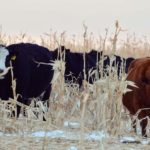MarketsFarm — An early snowstorm may have been the last straw for Manitoba livestock producers looking to put up feed ahead of winter. While the foot or more of heavy snow that blanketed much of the province over the Thanksgiving weekend has melted, saturated fields continue to limit corn silage harvests and hay cutting. “Feed







